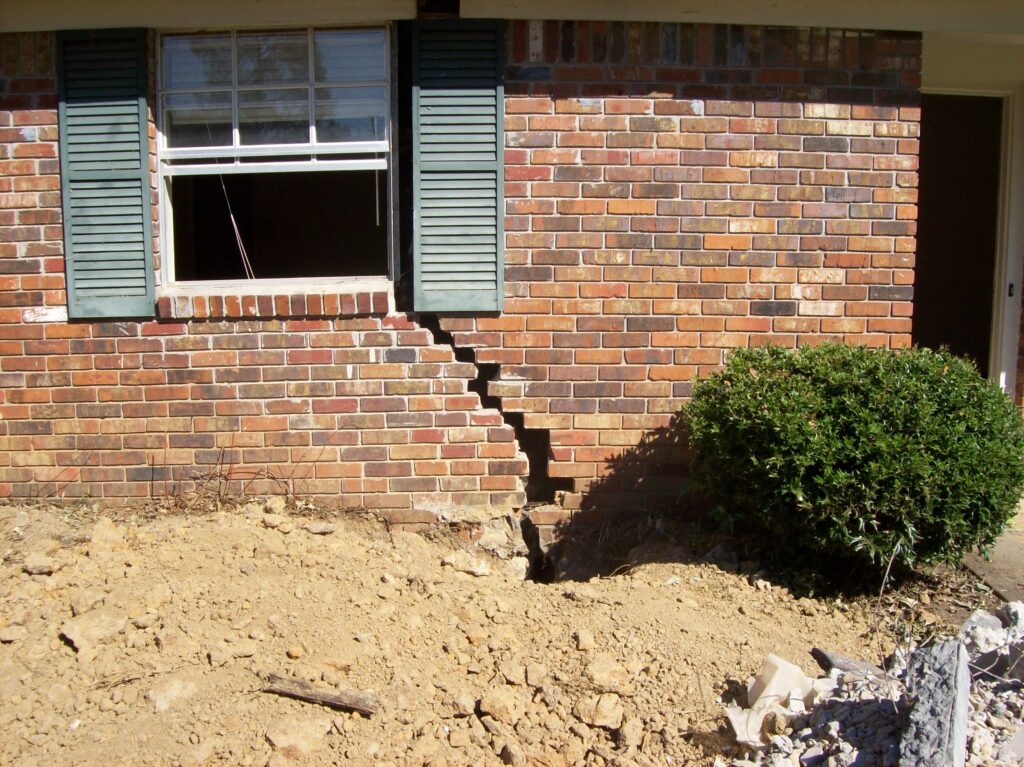Does a Building Warranty Cover Foundation Damage?The Architecture Designs

The foundations are one of the most important parts of any building. If something goes wrong with the foundation, the whole building is at risk – but even if you catch faults in the foundation early, fixing them can still be very costly.
Nobody wants to experience the nightmare of their home collapsing, or having to pay thousands of pounds to repair the foundations before it does. This is why having an insurance policy that covers your foundations is essential.
This blog explains what foundation damage is and how it can be prevented, including how a building warranty will be invaluable if the worst does happen.
What are the common causes of foundation damage?
source: pinterest.com
There are many causes of structural damage, which can usually be sourced back to poor design, materials, or construction work. If the design is defective, the building following that design will be, too – and even if the design is good, using the wrong materials or not following the right construction methods will result in a building riddled with defects.
Some faults may be noticeable right away (patent defects), which can be rectified before the build is completed. Others, known as latent defects, may not be apparent at first – it can take months or even years for signs of a structural defect to start showing.
This is especially true for the foundations, because these aren’t easily visible once the building is constructed on top of them. You might have no idea about what’s going on beneath your home until you start to notice things like:
Diagonal cracks around window and door frames
Doors and windows sticking shut or falling open
Uneven sloping floors, or separating floor and wall joints
Cracking or bowing walls in basements or lower floors
Cracks in exterior masonry that look like stair steps
Porches or chimneys separating from the main structure
Water intrusion in basements or ground floors
These things happen due to the weakened foundations failing to hold up the weight of the structure, thereby weakening the load-bearing elements and leading to structural movement. Common causes of foundation damage include:
source: pinterest.com
Soft or loose soil that hasn’t been compacted properly
Gaps in damp-proofing allowing moisture ingress
Laid too shallow or with poor-quality concrete
Uneven load distribution applying too much stress
Incorrect installation of wall ties and wind posts
Foundation failure most often comes down to destabilisation of the underlying ground. This leads to lateral movement or sinking down, as the foundations pull apart under too much pressure and are no longer able to hold up the walls, floors, and roofs above.
How can a building warranty protect against foundation failure?
source: pinterest.com
A structural warranty is a type of latent defects insurance that specifically covers the structural elements of a building. These building warranties typically apply to load-bearing components like:
Foundations
Beams and girders
Lintels and arches
Walls and floors
Roofing systems
This type of building warranty is usually taken out by a builder or developer at the start of a construction project. It includes several inspections at key stages of the build by a qualified professional, from laying the foundations and damp-proofing to an eventual completion check.
Your building warranty provider will send a chartered surveyor to make sure the foundations are laid properly, then check up on the build as it progresses. This minimises the risk of defective work or materials being overlooked until it’s too late, also reducing the risk of latent foundation failure.
source: pinterest.com
Of course, even the best of builders can make mistakes – and if structural warranty inspections didn’t begin until partway through the build, it’s possible for earlier errors to be missed. This is where the policy will be especially valuable, because if latent foundation defects do occur, you won’t have to worry about chasing down responsible parties or footing the repair bill yourself.
The warranty should give you at least 10 years of cover, providing peace of mind that if something goes wrong with the foundations during that time, you’ll have some financial support to help you rectify the problem. Though it’s better to secure a warranty early enough to prevent poorly laid foundations in the first place, its purpose is to help you whenever defects might develop.
The post Does a Building Warranty Cover Foundation Damage? appeared first on The Architecture Designs.





